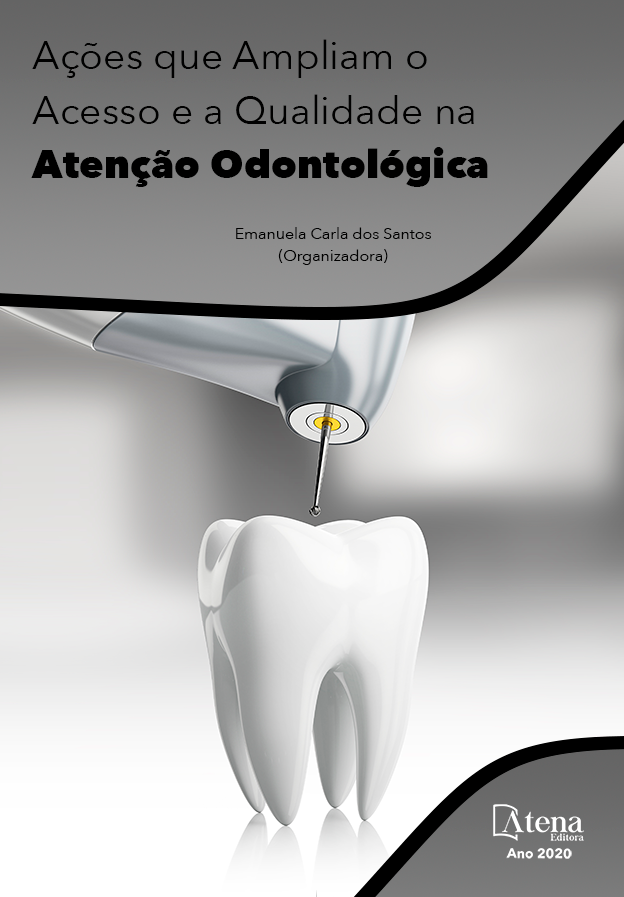
AVALIAÇÃO DE BARREIRAS QUÍMICAS E FÍSICAS NA IRRADIÂNCIA DE APARELHOS FOTOPOLIMERIZADORES
Introdução: O fotopolimerizador por ser um aparelho de uso contínuo e que não permite sua esterilização, o cirurgião-dentista deve-se atentar para algumas medidas para que se reduza o risco de infecção cruzada através do seu uso. Sendo assim, deve-se utilizar para assepsia deste instrumento barreiras físicas e/ou químicas que visam reduzir o risco de contaminação por parte do cirurgião-dentista e pelo paciente. Objetivo: Este estudo verificou a intensidade de luz dos aparelhos fotopolimerizadores e analisou a influência de barreiras físicas e/ou químicas na intensidade final emitida pelos aparelhos. Métodos: Foram utilizados 13 fotopolimerizadores da marca Schuster Emitter AFIT, para cada aparelho foram feitas cinco leituras para cada grupo testado: sem barreira, barreiras químicas (álcool 70%), barreira física (saco plástico) e associação de barreiras (álcool 70%, seguido do saco plástico). A intensidade de luz foi verificada através de um radiômetro calibrado da marca ECEL RD-7. Resultados: Após análise estatística pode-se verificar que houve diferença estatística quando não se utilizou nenhuma barreira com os grupos que utilizaram barreira física e com o grupo que realizou associação de barreiras. Conclusão: Em relação à biossegurança, a associação das barreiras físicas e químicas, embora tenham mostrado menores valores de irradiância, garantem melhor proteção dos aparelhos e evita a contaminação cruzada sem prejudicar os procedimentos clínicos.
AVALIAÇÃO DE BARREIRAS QUÍMICAS E FÍSICAS NA IRRADIÂNCIA DE APARELHOS FOTOPOLIMERIZADORES
-
DOI: 10.22533/at.ed.4572003114
-
Palavras-chave: Contenção de Riscos Biológicos, Polimerização, Equipamentos Odontológicos.
-
Keywords: Containnment of Biohazards, Polymerization, Dental Equipament.
-
Abstract:
Introduction: Because the light curing agent is a continuous use material that does not allow its sterilization, the dental surgeon should be used for some measures that may reduce the risk of cross infection through its use. Therefore, use asepsis to this physical and / or chemical barriers that may reduce the risk of contamination by the dental surgeon and the patient. Objective. This study verified the light intensity of light-curing devices and analyzed the influence of physical and / or physical barriers on the final intensity of actions by the devices. Methods: 13 photopolymerizers from the Schuster Emitter AFIT brand were used for each of the five groups of readings for each group tested: without barriers, chemical barriers (70% alcohol), physical barriers (70% sugar, followed by the plastic bag). The intensity of the light will be verified through a calibrated radiometer of the brand ECEL RD-7. Results: After statistical analysis one can verify what was done when a barrier was not used with the groups that used physical barrier and with the group that made association of barriers. Conclusion: Regarding biosafety, an association of physical and tissue barriers, although they had lower irradiance results, ensure better protection of the devices and avoid cross-contamination without prejudicing the clinical procedures.
-
Número de páginas: 12
- João Pedro Cabreira Oliveira
- João Victor Neves de Abreu
- Vitor de Souza Gonçalves
- Diogo de Azevedo Miranda
- Ana Paula de Almeida Nunes


